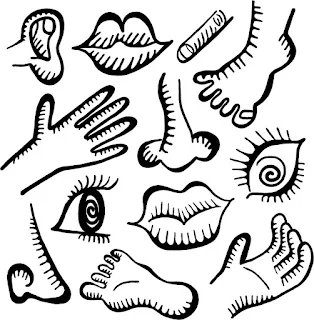Captivate Your Readers: A Step-by-Step Guide to Mastering "Show, Don't Tell" (Free Word List Bonus!)
Dive Deeper: A Masterclass in "Show, Don't Tell"
Ah, the age-old writer's adage: "Show, don't tell." We all know it's important, yet translating that knowledge into captivating prose can feel like deciphering an ancient scroll. Fear not, fellow wordsmiths! This guide will be your Rosetta Stone, unlocking the secrets to transform your writing from informative to immersive.Imagine this: you're reading a scene where the protagonist is supposed to be terrified. But instead of feeling the heart-pounding fear, you get a bland statement: "She felt scared." That's telling, not showing.
Now, picture this: The floorboards creaked ominously beneath her trembling steps. Shadows danced on the wall, morphing into monstrous shapes in the flickering candlelight. Her breath hitched in her throat, a dry rasp against the suffocating silence. This is showing. We feel the protagonist's terror alongside her.
The power of "show, don't tell" lies in its ability to transport readers into the heart of your story. It's the difference between a flat landscape painting and a vibrant world teeming with life. Let's break down the steps to becoming a master showman:
Step 1: Identify What You're Telling
The first step is to pinpoint what you're currently stating outright. Are you describing a character's emotions (e.g., fear, excitement), the setting (e.g., creepy house, bustling city), or the atmosphere (e.g., tense, peaceful)?For example: "Sarah felt nervous about her presentation."
Step 2: Engage the Senses
Instead of telling us Sarah is nervous, immerse us in her experience. What might she see, hear, smell, taste, or touch? - Sight: Blurry faces in the audience, her shaking hands clutching the notecards.
- Hearing: The hum of the projector, her own heartbeat drumming in her ears.
- Touch: The clammy sweat on her palms, the scratchy texture of her notecards.
- Smell: The audience's mix of perfume, her own sweat, the papery smell of her notecards.
- Taste: The toothpaste from brushing her teeth, the coffee she had on the way, a sick sourness from her fear.
Step 3: Show, Don't State
Use strong verbs and descriptive language to showcase these details in action.Rewrite: Sarah's knuckles whitened as she gripped the notecards, their edges digging into her damp palms. Her heart hammered a frantic rhythm against her ribs, each thump echoing in the sudden silence of the room. Blurry shapes swam in her vision as she scanned the audience, their faces morphing into an indistinguishable mass. A sick sourness crept its way up her throat.
Step 4: Internal Dialogue (Use Sparingly)
While internal monologue can reveal a character's thoughts, overuse can slow the narrative. Consider using it to punctuate moments of high emotion.Example: "Maybe I should have practiced more," a stray thought flickered through Sarah's mind, quickly chased away by a wave of nausea.
Step 5: Strike a Balance
Remember, "show, don't tell" isn't about eliminating all exposition. Sometimes, direct statements can move the story forward efficiently. Too much "showing" can bog down the reader in excessive details and slow the pace of your story. The key is to find a balance, using vivid descriptions when emotions or situations are central to the scene.Bonus Tip!
Elevate your vocabulary: Having a strong vocabulary is a valuable tool for "show, don't tell." We've created a downloadable list of alternatives for common, overused words to jumpstart your descriptive toolbox! (Download link at the bottom of this post)Here's a revelation I had: simply swapping out those bland words for more descriptive synonyms made a world of difference! My story went from average to interesting, while still maintaining the momentum.
Having a strong vocabulary is a secret weapon for "show, don't tell." It allows you to paint vivid pictures with words and truly immerse your reader.
Download your free list of alternatives for common, overused words! It'll jumpstart your descriptive toolbox and help you craft sentences that sizzle.
Download "Bland Word Synonyms"
Happy writing!
Christine Tellach








Comments
Post a Comment